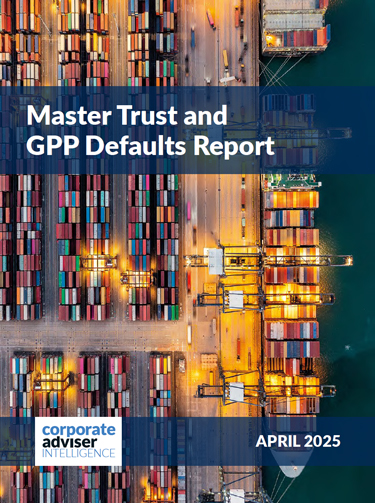“If employers are looking to cut back on health and wellbeing benefits, it’s a short-sighted view,” says Damian Lenihan, head of client management at Bupa. “Nowadays organisations tend to be leaner, which leaves less space for people to be off ill. They need people at their desks working hard more than ever.”
As well as ensuring the organisation can function, Jessica Colling, product director at Vie Life, says that looking after employee health will have greater benefits. “Looking after employee health is exceedingly positive for the bottom line. Employees will be more productive and much less likely to be absent,” she explains.
Stress can be a particularly significant problem in this economic climate. “In unusual times, people do appear to be more stressed,” says Colling. To illustrate this she says that, where companies have been taking annual health risk assessments, she has seen a noticeable dip in the mood score. “Employees are less positive this year,” she adds. “As well as their job security they’re worrying about external things like their finances, partner’s job and so on.”
A range of health and wellbeing benefits can help an employer tackle stress in the workplace. An employee assistance programme (EAP) is often a good starting point, especially as this can help an employer cover his duty of care requirements. Further, with these plans covering a broad spectrum of problems, providers are reporting huge increases in usage.
Claire Walmsley, healthcare manager at Jardine Lloyd Thompson, says this is a product that has bucked the current sales trend. “EAPs are hugely important at the moment and we’re selling a lot of them at the moment. For as little as £4 per employee a year they, and their family, have access to a helpline that covers everything from stress and relationship problems to legal and financial issues.”
While an EAP gives a good defence, training employees to deal with stress is another important tool. “Giving employees the means to cope is better than having to deal with stress,” says Colling. Training programmes, either delivered face-to-face or online, can be used to teach employees these skills.
Absence management programmes are regarded as another must-have in the health and wellbeing armoury. Paul Avis, corporate development manager for Ceridian’s Lifeworks, says they have become more important in the current climate. “It’s crucial to manage absence at a time when maximum attendance is often necessary to maintain ‘business as usual’, especially where higher work demands are being placed on fewer employees.”
And it’s not just a question of getting employees well and back in the workplace quickly either. With the threat of redundancy haunting the workplace, employees are much less likely to take a sickie, even if they’re actually ill. For example, research carried out on behalf of Aviva UK Health found that, in the current economic climate, 55 per cent of employees would go into work even if they were ill. “Attendance shouldn’t be a criterion for redundancy but employees are scared that a few sick days will make them a candidate. With the risk of these employees spreading disease by coming into the workplace, employers need to have more health surveillance to ensure employees look after their health,” says Avis.
Having sick employees in the workplace not only increases the risk of others becoming infected, but as they may be more likely to make mistakes, there’s also a risk of more accidents. This could have a knock-on effect on other products including employers’ liability insurance and group income protection.
Even the softer health and wellbeing benefits such as massages, free fruit and yoga sessions have their advocates. “You might save a few £1,000 but removing these types of benefit can have a huge impact on morale,” says Lenihan. “They show employees that their employer cares.”
Reassuringly, where employers already offer these services there’s little evidence of any cutbacks. “We haven’t found many employers cutting this type of service but it has become more common for them to review and refine the models they have adopted,” says Avis.
For starters, it’s important to make sure the benefits are relevant to the workforce. Lenihan says that where an organisation is looking to improve employee health with these benefits, a health risk analysis tool should be a primary consideration. “These aren’t hugely expensive, especially when it’s an online service, but the results will help to drive the other products you implement,” he explains.
For example, if an assessment found that a lot of employees smoked, it might be sensible to implement a smoking cessation programme. Similarly, a high level of stress among employees might necessitate additional support, perhaps through an EAP or resilience training.
It’s also important that any initiatives fit the company culture. Colling explains: “Think about what employees would like to receive. Employers need to be thoughtful to get the most benefit from these initiatives.”
As an example, she says that if it’s normal practice for employees to go out on a Friday after work and get drunk together then, rather than try to quash this, build on it by turning it into a team building event.
Employers have also refined their health and wellbeing benefits so they are integrated more effectively within the broader benefits package. This could be reducing the psychiatric benefit on the medical insurance where an EAP is in place or removing a health screening programme where this benefit is included on a healthcare cash plan.
As well as tweaks to existing benefits packages, there’s also more thought going into whether these services are purchased at all. For instance, Avis says that although the number of employers requesting quotes has never been higher, most aren’t progressing to implementation. “This tells us employers recognise the importance of these benefits, but are unable to gain the investment for them,” he adds.
Persuading employers to add another benefit to their spend is tricky, even when the cost might only be small. “These benefits don’t sit well on the profit and loss account,” says Neal Archbold, senior proposition development manager at Aviva UK Health. “An employer has to write a cheque for these services but if they don’t see any of the benefits such as reduced absenteeism or increased productivity on the balance sheet. If we can’t make these benefits tangible then they become a cost centre.”
Archbold says that it can take three to five years for any return to come through.
To counter these problems, providers are developing new ways to get health and wellbeing on the agenda. Some are including them as a freebie with other products. For instance, medical insurers such as Bupa, Standard Life Healthcare and Aviva UK Health include free online health assessment tools for employees while group income protection provider Unum offers a free EAP with its plan. Similarly, as well as an online health assessment tool, PruHealth offers employees access to a health information website and its vitality programme as part of its corporate medical insurance.
Aviva Health is looking to increase take up of these benefits later this year with the launch of a cashback option on its online health assessment tool. With this, the employee takes part in a points system, where he or she is rewarded for taking steps to improve their health. These points can then be used to get benefits such as discounts on gym memberships, bicycles and holidays.
There are also benefits for the employer as Archbold explains: “If the average health status improves, we can return some of the premium to the employer. If they get enough employees taking up the reward system then they could get the entire premium back. Offering incentives to both the employee and the employer will help increase take-up.”
The cashback option will be available in September for groups of 250 or more employees. As well as being able to run it alongside a medical insurance or income protection scheme, employers will be able to buy it on a standalone basis.
As well as financial incentives to take out health and wellbeing benefits, it’s also possible to implement things very cheaply.
For instance, Colling says that simply encouraging employees to take time out will improve productivity. “It can be difficult for employees to feel they can take a break, but 15 minutes away from their desk can improve their concentration and productivity. Making this part of a company’s culture can bring huge benefits,” she explains.
And whether a corporate client already has health and wellbeing benefits in place, or is looking to introduce them, Avis points out one way to maximise their effectiveness. “Employers should look to promote these benefits more.
“Employees can’t use them if they don’t know they’re there so put some effort into promotional activity.”




